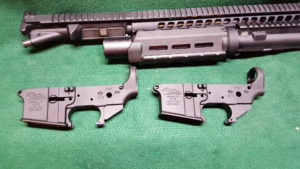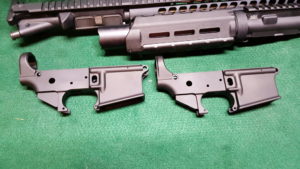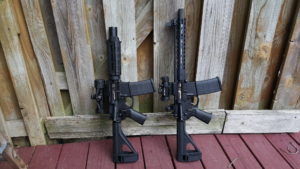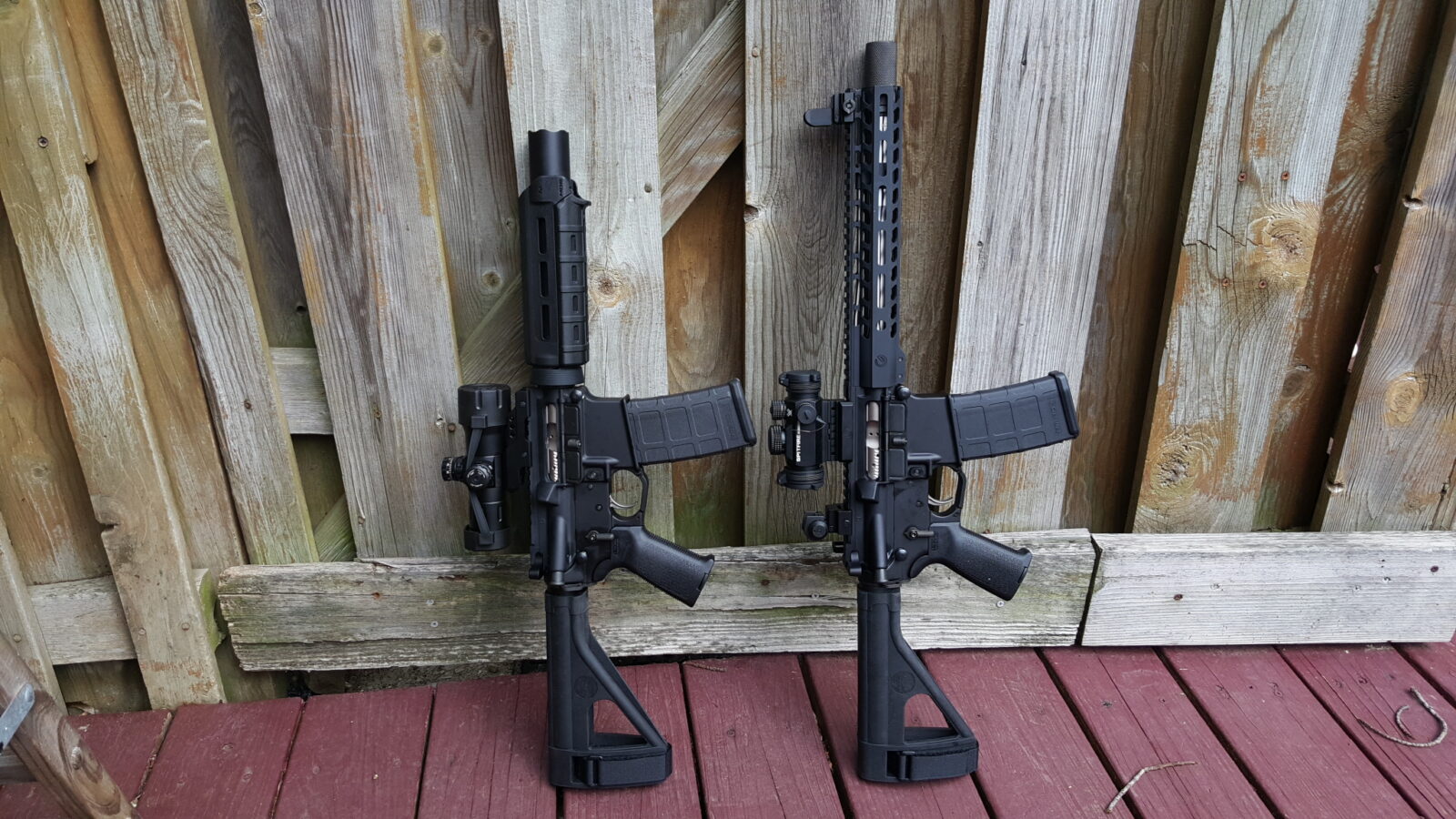


I have to admit that I like a lot of different firearms including both AK and AR platforms. So I am not purely an AK fan though my business is largely built around that. I have owned many, many different ARs over the years including tactical, DMR, snipers, pistols and flat out range toys. I don’t have much free time any longer so the AR platform gives me a chance to tinker with different combinations and see what I like.
At the heart of the AR is a lower-receiver that can be made by just about anyone as long as it is Mil-Spec. Now this is critical. Not all receivers are as accurate as they claim to be with their tolerances, hole positions and what not so ask around. I’ve had very good luck with Anderson (my go to brand for several years now), Palmetto State Armory (PSA), Spikes and Del-ton. I’ve not had a single problem with any of these brands. You may not have as much luck with “Uncle Bob’s Lowers made in Podunk Nowhere” so just start with a good foundation.
For the two AR pistols that I will be assembling for the upcoming blog posts, I will be using Anderson lower receivers.
Assembling an AR for a rifle or a pistol is almost identical until you get to the gas tube. At that point a pistol must use a pistol tube and a rifle will use whatever tube you wish. I’ll point that out again in post #9.
I am not a lawyer and the following should not be construed as legal advice. I’m just trying to explain my understanding on how to build an AR pistol legally:
One important item for guys making pistols, to be legal, the receivers must be transferred to use as receivers. Your FFL must NOT transfer the receiver as a rifle. There is an FFL notice that once a receiver is built as a rifle, it is a rifle. If you change it into a pistol, then you are making a short-barreled rifle (SBR) that must be registered. Oddly enough, you can build a receiver as a pistol and then convert it to a rifle. [Click here for a link to the ATF letter]
My recommendation is to always take photos of the pistols built appropriately so you can show the paper trail of a receiver transfer from your FFL through to a built pistol.
Also, there is another issue to avoid – do not buy pistol-length uppers (meaning uppers with barrels shorter than 16″) and having them sit around without a pistol receiver waiting. Buy the receiver first, then corresponding upper and put them together. Why you might ask? The concern is something known as “constructive intent”. You do not want the ATF or others in law enforcement to assume you only have that SBR/pistol upper to put on one of your rifles. That requires paper work and fees in order to have a legal SBR. You absolutely can’t just put a sub-16″ barrel on a regular rifle – it will be illegal. [Click here for the ATF letter about SBRs]
The ATF has ruled that braces do not make a pistol into a rifle. I have carpal tunnel and can’t hold a heavy pistol so this is good news for me. So, I bought my Anderson lowers first, my lower pistol build kits from PSA and then an 7.5″ upper from PSA and a 10.5″ upper from Ghost Rifles. The blog posts that follow document my journey building these two AR pistols.
If you find this post useful, please share the link on Facebook, with your friends, etc. Your support is much appreciated and if you have any feedback, please email me at in**@*********ps.com. Please note that for links to other websites, we are only paid if there is an affiliate program such as Avantlink, Impact, Amazon and eBay and only if you purchase something. If you’d like to directly contribute towards our continued reporting, please visit our funding page.
AR Parts Sources
There are a lot of reputable AR parts vendors online but beware of eBay and bargain basement dealers that sell airsoft parts and tell you they will stand up to firearm use – they will not. At any rate, here are my top sources of AR parts:
